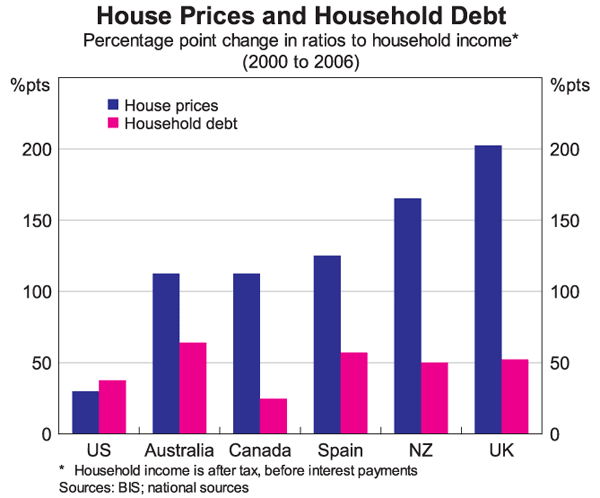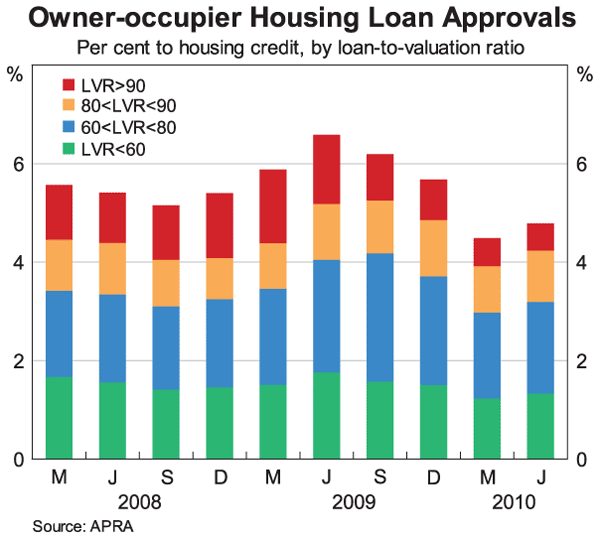Speech Remarks to Finsia Financial Services Conference

Luci Ellis
Head of Financial Stability Department
Finsia Financial Services Conference – Meeting of the minds: our global agenda
Sydney –
- Audio 6.4MB
I would like to begin with an apology. As some of you might know, my boss Malcolm Edey, the Assistant Governor of Financial System Group at the Bank, originally planned to be here today. However there was a meeting of the Basel Committee on Banking Supervision yesterday in Seoul, called at short notice. Flight schedules being what they are, he is currently on his way back to Australia. So I am here in his place.
This switch of personnel is just one example of a particular consequence of the crisis. That is that there is an enormous work program of regulatory reform in progress internationally, with some tight deadlines. That means that many of us in the regulatory community are attending a lot more international meetings than we used to. I'm not going to discuss the substance of these regulatory reforms today, or their implications for Australia. I understand John Laker is going to do that. Instead I will restrict my reflections to two specific lessons from the crisis. The first lesson is how important it is that the central bank and prudential supervisor cooperate closely. The second is that financial stability analysis requires new approaches, better analytical tools and more data than were available in many countries prior to the crisis.
On the first of these lessons, supervisors and central bankers need to cooperate because we each bring different things to the authorities' response to financial distress. The supervisor has access to information about individual firms that goes beyond the formal data collections. The central bank's role in financial markets allows it to monitor events in real time. The two institutions have different sensibilities and look at data in different ways. It is useful to have those different perspectives. I should note that effective cooperation does not require that key officials in the supervisory authority be former central bankers. Some of the people I talk to regularly at APRA were never at the RBA; others were, but I didn't know them then. What matters is that we hold true to the idea that it is our professional duty to cooperate.
A number of commentators claim that the lessons of the crisis have implications for the institutional organisation of financial regulation. In particular, some assert that it shows that the bank supervisor should be in the central bank. Others assert that the same experience shows that it should not be. I am not compelled by either side of that argument. Some countries with bank supervision inside the central bank were heavily affected by the crisis, while others were not. Likewise some countries with one or more specialist prudential supervisors outside the central bank were amongst the most affected by the crisis; others, including Australia, were much less affected. I do think there are important synergies between banking and insurance supervision, so it makes sense to put those together. But where the supervising entity sits matters far less than whether it has the powers, resources, and – most importantly in my view – the organisational culture, to do its job effectively and independently.
Regardless of whether the supervisor is inside or outside the central bank, it is important it shares information readily with the team in the central bank that is responsible for monitoring the stability of the financial system as a whole. When I am at international meetings, I sometimes hear my counterparts complain that they cannot get all the data they need from the supervisor. I'm glad to say that in Australia we don't have that problem. There is an established cost-sharing arrangement. If we want the data we can have it. We just have to ask.
Today is World Statistics Day, so it seems particularly apposite to be making this point today. I would like to emphasise just how important this statistical function is. Timely, high-quality data are essential if we are to have any hope of identifying risks and vulnerabilities in the financial system. The Bank also uses data collected by APRA in the course of its monetary policy function. For example, the money and credit data published by the Bank, as well as the ABS loan approvals data, are compiled from raw data collected by APRA. Reserve Bank staff work closely with the Statistics team at APRA to maintain the quality of the data provided by banks and other financial institutions. We put a high priority on this function. But of course the raw data are provided by the financial institutions. They also need to devote enough resources to ensure that they are reporting timely, accurate, meaningful data to APRA.
This point brings me to the second lesson from the crisis that I would like to speak about today. And that is that financial stability analysts don't just need accurate data: we need more data, new analytical tools and – in some cases – a broader approach to that analysis.
I am not suggesting that there was anything inherently wrong with the economics profession's basic approach to financial stability analysis before the crisis. Many of the underlying risks had actually been identified, though perhaps not the ways they were connected. But the events of the crisis taught us that some aspects of the financial system had not been given enough attention. For example, wholesale markets could become less liquid and reliable than some people had previously assumed. Another example is that the so-called ‘shadow banking system’ was more important than some observers had appreciated, especially in the United States – though less so in Australia. A third is that it is not just big firms or direct exposures to a firm that can cause contagion. Crowded trades also matter; if many firms have similar positions, they can all be affected if one of them becomes distressed.
Related to this point, the events of the crisis emphasised that financial stability analysis is not the same as most of the macroeconomic analysis done in advance of monetary policy decisions. In particular, for financial stability analysis, it isn't enough to look at the aggregate or average data. We need to track the tails of the distribution, where the worst risks are. So where my colleagues in Economic Group are mainly focussed on what is likely to happen, the team and I in Financial Stability Department tend to focus on the less-likely things that might go wrong. We often find ourselves looking at the same data, but in different ways.
For an example of a case where aggregate data can be outright misleading, consider this graph (Graph 1). It shows how much the ratios of housing prices and household debt to household income increased, in percentage points of household income, over the boom period of 2000 to 2006. Comparisons like this drew some observers to conclude that the United States was less likely to have had a bubble then than some of the other countries shown on the graph. Of course, that doesn't ring true given how things turned out. Understanding why requires looking at much more disaggregated data. These would have shown that lending standards had eased much further in the US mortgage market than in those in other countries. More US households were taking out loans with very small deposits, or for larger amounts than they could reasonably pay back. But because most borrowers were still taking out conventional ‘prime’ loans, this wasn't obvious from aggregated data.

Here is an example of both disaggregated data and the kind of new data we find useful. This graph shows a slightly more detailed version of some APRA data we have already presented in the last few Financial Stability Reviews (Graph 2). They are the flow of newly originated owner-occupier housing loans, disaggregated by the loan-to-valuation ratio at origination. These data are quite new – they are only available since the start of 2008, though planning for that collection started several years before that. These data provide an insight into loan-to-valuation ratios on new loans. In particular, they help us understand whether an increase in the average loan-to-valuation ratio on new loans has occurred because there are more high-ratio loans, or fewer low-ratio ones. It is not hard to see that the implications for risk in the household sector would be different depending on which was true.

This brings us back to the regulatory reform process. Alongside the goal of improving banks' resilience through stronger capital and liquidity positions, there is the goal of improving the resilience of the system as a whole. This means being alert to the possible connections between different parts of the financial system. It means detecting the build-up of risk-taking and leverage as it happens. And it means seeing the concentrations of risk, not just what is happening on average. All of these concerns imply that financial institutions will be expected to report – and disclose – more information than in the past. It will be up to central banks and other regulators to make good use of it.
Thank you.